

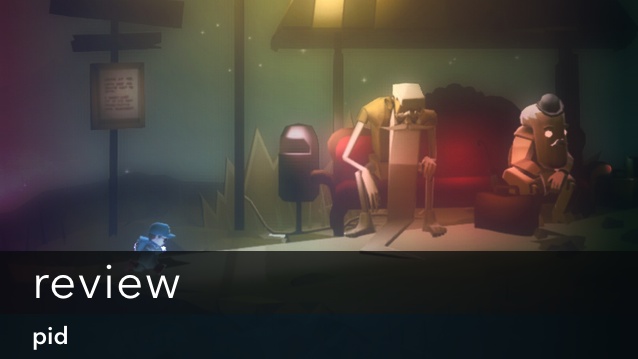
The 2D puzzle-platformer is making a return. This is probably because it’s possible to take a single concept and develop the whole game around it. Pid, short for ‘Planet in Distress’, tries to do exactly that and whilst it does display flashes of brilliance, Pid does suffer from some very serious flaws.
The protagonist is an eight year old boy named Kurt, who falls asleep on the bus on his way home, and ends up on an alien planet. This is perhaps all the discussion Kurt requires or deserves because, to be frank, the characters in Pid suffer from a distinct lack of any real personality, which is odd as Pid just oozes character and style in every other aspect. The world, the backgrounds, the music and the model design of the characters; all of these things have a remarkable amount of personality to them, but the dialogue, whilst not being incompetent, provides at most, uninteresting excuses for the occurrence of the game and sheds very little light on the characters.
 The lacklustre dialogue is actually not too much an issue as the real story of Pid is told in the environments. These environments range from old castles and mysterious catacombs to bright towns and lavish, giant dining rooms. Pid is a game that is carried almost completely by its aesthetic design, and is certainly one of the more beautiful games to have been released in the last few years. Utilising a remarkably wide colour palette, and supported by a good level of graphical fidelity, Pid constantly works to keep the player interested in their surroundings.
The lacklustre dialogue is actually not too much an issue as the real story of Pid is told in the environments. These environments range from old castles and mysterious catacombs to bright towns and lavish, giant dining rooms. Pid is a game that is carried almost completely by its aesthetic design, and is certainly one of the more beautiful games to have been released in the last few years. Utilising a remarkably wide colour palette, and supported by a good level of graphical fidelity, Pid constantly works to keep the player interested in their surroundings.
Similarly, Pid’s musical score is packed with variety, and is truly a fitting accompaniment to its wonderful visual design. Featuring everything from metal and classical pieces to what sounded like the saxophone component of a smooth jazz track, Pid makes great use of a wide range of different music genres to lend each location an ambience all of its own. The more general sound design lacks the flair of the soundtrack, but is certainly more than up to the task of breathing life into Pid.
The concept that Pid is built around, and the reason for much of the adventure, is a little gem that allows the player to generate levitation beams by throwing a little ball of light at a surface. These beams can be placed on most surfaces, no matter the surfaces orientation, and will push away the player, or any objects and enemies that are in contact with the beam. This mechanic is interesting and the range of support mechanics, such as inverter pipes that reverse the direction of the force being applied by the beam, brought in to complement and play off this ability are all executed well even if the majority are predictable and a little uninspired.
Some of the more interesting puzzle situations that arose from the beams were things like using the levitating beam to redirect an enemy’s missile into a switch that only reacts to explosions or levitating bombs into the faces of unsuspecting enemy guards and distracting one type of enemy that looks like someone took a rubbish-bin and gave it the wings of a dragonfly.
Unfortunately, the delight of floating bombs into the faces of enemies lasts only a short while and this is probably the last time that the mechanics and level design are truly working in tandem to create a wonderful experience. Truth be told, most of the not insignificant challenge in Pid comes not from actual obstacles, rather it comes from un-obliging and often downright obtuse level design. The tile-sets may be marvellous, but that doesn’t disguise the fact that the levels largely suffer from poor design.
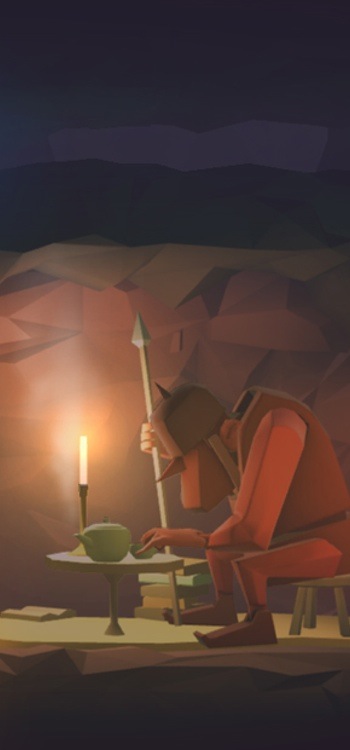 The problems with Pid’s level design reads as a litany of bad habits and archaic practices that have already been superseded by much better design choices: blind drops are commonplace, traps that are impossible to predict or even be aware of prior to being killed by them are reasonably common, jumps that are often just too far for a normal jump (this confuses players and generally kills them or forces a reset of a timed puzzle), an over-reliance on timed platforming, hidden rewards that are just not worth retrieving because the unbelievably stupid checkpoint system guarantees that the slightest slip will result in completely restarting an area thus wasting the players time with needless repetition and punishing all attempts at exploration; a failure to use the beams to their fullest extent as well as over-limitation of the beam mechanic – beams cannot be placed on polished surfaces and the polished surfaces are nothing if not over-used; add up to a failure to capture the joy of motion that is so integral to a good platformer as well as dozens of small one-off mistakes.
The problems with Pid’s level design reads as a litany of bad habits and archaic practices that have already been superseded by much better design choices: blind drops are commonplace, traps that are impossible to predict or even be aware of prior to being killed by them are reasonably common, jumps that are often just too far for a normal jump (this confuses players and generally kills them or forces a reset of a timed puzzle), an over-reliance on timed platforming, hidden rewards that are just not worth retrieving because the unbelievably stupid checkpoint system guarantees that the slightest slip will result in completely restarting an area thus wasting the players time with needless repetition and punishing all attempts at exploration; a failure to use the beams to their fullest extent as well as over-limitation of the beam mechanic – beams cannot be placed on polished surfaces and the polished surfaces are nothing if not over-used; add up to a failure to capture the joy of motion that is so integral to a good platformer as well as dozens of small one-off mistakes.
Out of that list of problems, possibly the most serious is the failure to capture the twinned joys of motion and exploration. In a platformer the player should love to traverse the level. Each level should be designed in such a way that the player can see the path that is to be taken and then it all comes down to their execution, providing the player with a sense of achievement when they manage that perfect run or pull off that jump with hairs-breadth precision. Ultimately, a platformer should be leading them to flow through the level in a seemingly effortless way, knowing that at any time they are only a fraction of a second, a single mistake, away from bringing the whole thing to an undignified halt.
Sadly, Pid fails to do any of that for any significant length of time. There are sections when Pid displays a momentary genius, however that usually comes to a prompt end as the next puzzle or area is introduced. The areas themselves never seem to allow for much motion, often because there is an enemy in the way – and the number of enemies and static traps really is far too high in many areas – or there is some feature in the environment, such as an unnecessary platform, that seems to have been placed specifically to kill any momentum the player may have gained.
In addition to all that, Pid seems to hate exploration with a passion. Any attempt at exploring a new area is likely to end in death which, due to the ridiculous checkpoint system that makes you go back and recollect all of the items in an area if you die before the next checkpoint, means that the player is punished for exploring by having to waste a lot of time recollecting the stars (which serve as a form of currency in the game, useful mostly for restocking consumables at vending machines scattered about) and other assorted goodies scattered throughout the levels. This, other than being less than fun, is also mindboggling when you take the time to consider that Pid’s levels have been designed to be explored; there are secrets galore hidden around every level! The reason why the developers would design the levels like this, and then use a save-system that actively discourages exploration, is beyond me.
There is one, far too brief level that gets right everything that the rest of the game gets wrong and serves to highlight the missed opportunities and mistakes: The Maze. Using a lot of deep, dark blues and set to the sound of a smooth jazz saxophone, this area encapsulates the potential of Pid. The changes in height are all just high enough to allow downward momentum to be gained, but not so high that the beam can’t carry you up the other side. The horizontal corridors are likewise just long enough to make effective use of the beam. With a little skill, and some forethought, it is possible for the player to move about the level never touching the floor; chaining beams together to carry Kurt about the level as if he were riding along on a breeze.
One more very noticeable aspect is an almost complete lack of enemies around to impede your progress. It’s a level that is all about platforming and the joy of motion. The joy of exploring the capabilities of the beams and of every other gadget the player will have acquired over their journey. The Maze is a glimpse at what Pid could have been. It’s a glimpse of the potential and talent behind the Pid development team. Should Pid receive a sequel, and I believe it should, The Maze should serve as the basis for the design brief: more organic platforming and fewer enemies.
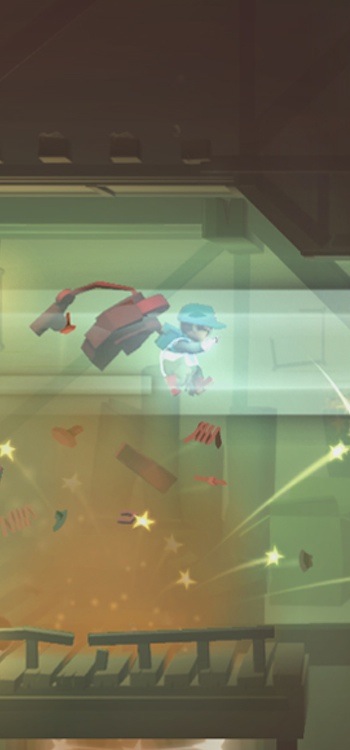 The Maze is not, by any stretch of the imagination, a perfect level, however it does serve to show where the real strengths of Pid’s gameplay lie.
The Maze is not, by any stretch of the imagination, a perfect level, however it does serve to show where the real strengths of Pid’s gameplay lie.
Pid’s puzzle design is another aspect that leaves a lot to be desired. The puzzles suffer from a vast over-reliance on timed mechanics, an over-saturation of enemies and seem to have been designed to be as awkward as possible given the gameplay mechanics. Many puzzles are artificially extended by placing random bits of scenery in the way of what would otherwise be a pretty straightforward jump (sometimes even going to so far as to add slants to surfaces so that the player cannot use the beams to bypass awkward jumps). These tricks are fine in moderation, but Pid relies on them far too much and they tend to just become annoying after a while. To top this all off, Pid’s puzzle design fails to elicit a sense of achievement as the puzzles are always fairly straight-forward, with the only real obstacle being the level design.
It seems that Pid is not really sure what it would like the players main method of traversal to be: jumping or using the beams. Some areas punish attempts to use the beam and just as many thwart jump-based play-styles.
There are a few other problems with Pid that are worth noting; the controls aren’t as responsive as Pid thinks they are, the decision to not allow some kind of ‘aim’ mode for the basic throw does result in lots of awkward repositioning and trial and error as you try to line up that perfect throw; the limiting of certain items, specifically the burst beam, does further limit exploration and it seems that there is a possibility to inadvertently make progress impossible in at least one instance (make sure you always have at least five stars on you during the city area).
The quality of the PC port on Pid is a little bare to say the least: there’s no mouse support at all; graphical options are limited to low, medium and high (not that changing them seems to make a blind bit of difference at the moment – I assume this is a bug); but you can rebind the keys, which is always good and the game does run at a solid 60 frames per second.
Pid set out to bring a little bit of ‘retro’ gaming back into modern 2D puzzle-platformers. It’s fair to say that Pid succeeded in doing that, unfortunately it picked all the wrong bits to bring back. Pid’s unforgiving difficulty would probably be quite an asset were it not for the terrible checkpoint system, poor level design and odd decision to limit exploration tools like the burst beam to just a few charges at any given time as well as the over-saturation of enemies in many areas.
Despite its plethora of flaws, Pid is a game that may find a home in the hearts of certain people: completionists who like to meticulously plan their route through an area and don’t mind repeating a section multiple times in order to perfect their execution; people who find the greatest value in games with lots of character and style, regardless of flaws in level design and mechanics; and people who wish ‘Limbo’ and ‘I Wanna Be The Guy’ had a baby. I’m not going to recommend you don’t buy it, I’m going to recommend caution and the expectation of frustration. Certainly, $10 for a game of Pid’s overall quality seems fair, the only question is whether you view it as worth your time.
Pid is available for PC directly from the developers, on Steam, GOG.com and Raindg.com. Pid is also available on PSN and on the Xbox Marketplace (800MS).
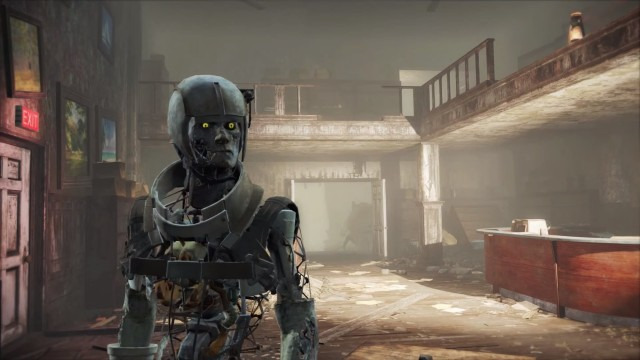
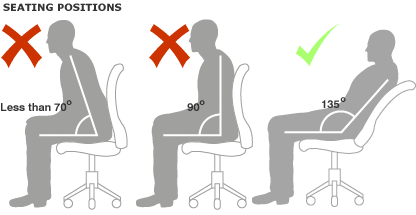


 An Interview with David Brin on Videogames and Science Fiction
An Interview with David Brin on Videogames and Science Fiction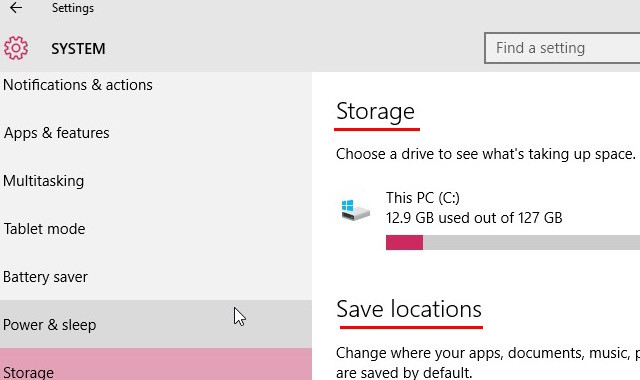 Free Up Disk Space by Moving Windows Apps to External Media
Free Up Disk Space by Moving Windows Apps to External Media On Its Just A Game
On Its Just A Game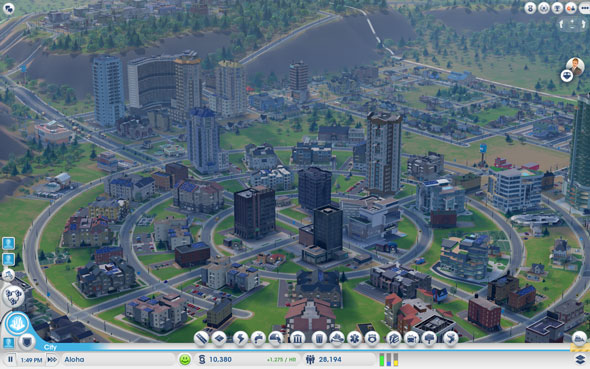 EA Does What's Not Possible: Adding Offline Mode To SimCity
EA Does What's Not Possible: Adding Offline Mode To SimCity On PS4 How To Create PSN Master Account
On PS4 How To Create PSN Master Account